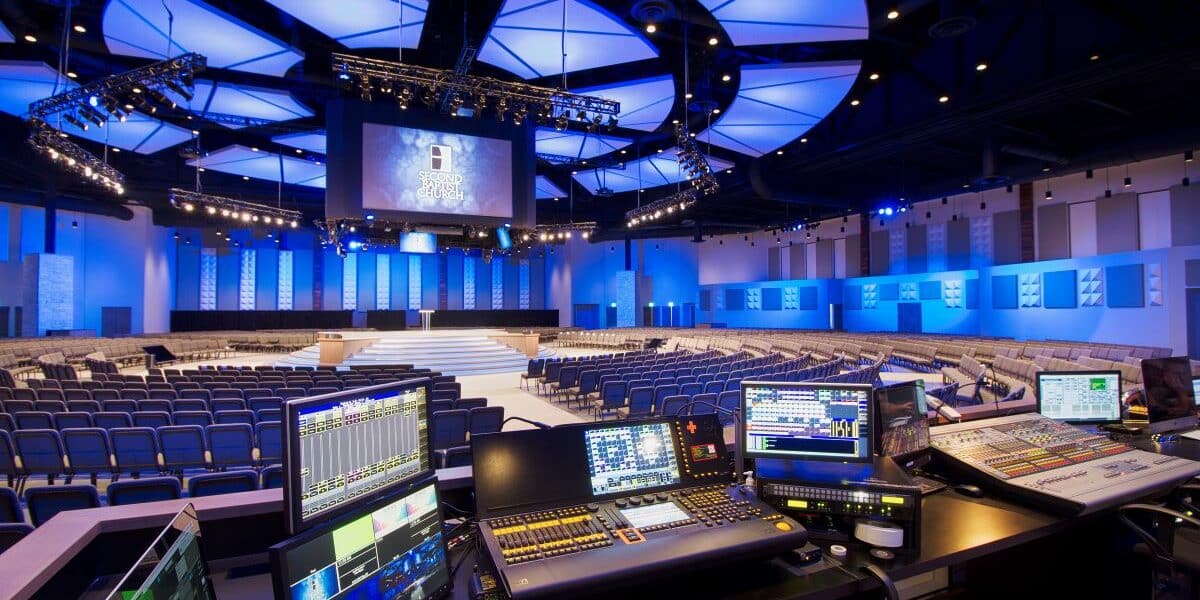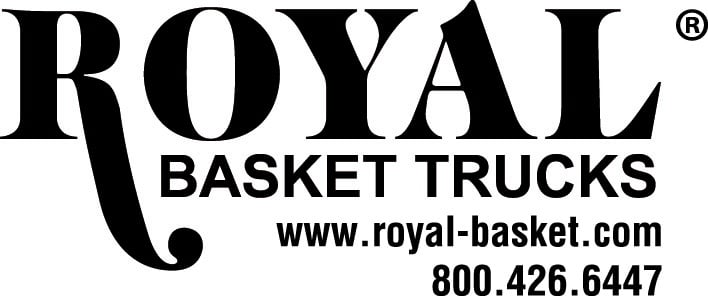Has the question of remodeling your church’s sanctuary come up repeatedly in leadership discussions? Even so, is there a lack of decision-making or consensus on next steps?
A church sanctuary remodel can be a huge project both in scope and budget, so it’s not surprising that deliberation on the topic often lasts months, or even years. Sometimes it starts with a volunteer technician reporting small but repetitive issues. Sometimes the lead pastor senses an audio/visual disconnect from the congregation.
Whatever the origin, at some point every church encounters the need to adjust or remodel their sanctuary to meet the current needs of their congregation. To find out if you’ve reached that point, your team will need to have some open and honest conversations about what your current needs are, whether you’re ready to start a remodel, and what tangible goals you’d like to achieve if you decide to move forward.
These are the kinds of conversations that will help everyone think through the proposal carefully and come through knowing you’ve made a wise decision together.
To help uncover your church’s specific needs and create a functional sanctuary remodel to meet those needs, here we provide five big questions for lead pastors, executive pastors, media directors, and anyone else in a decision-making role to ask themselves and one another.
- What Is the Fundamental Reason for Renovating?
The first question to ask yourselves in considering a remodel of your church’s sanctuary is why are we doing this?
No one wants to spend money unless there’s a real reason to do so. Some building systems, like heating and A/C for example, require regular maintenance and have a fairly predictable shelf life before they shut down completely and need to be replaced. AVL equipment, on the other hand, doesn’t usually just stop working.
Instead, equipment can be nursed and band-aided along for 10, 12, maybe even 15 years at a time. It becomes outdated long before it breaks. So the fundamental reason for upgrading AVL won’t necessarily be because the old equipment has died.
More likely, the reason will be either that the sanctuary needs a facelift to better match your current congregation and its needs, or that the existing systems are hobbling along and limiting your ministry.
Knowing the fundamental reason – or reasons – behind your renovation will lead to wise decisions. Connecting to the why will help you make efficient use of time and money, and ensure you’re achieving a targeted goal.
- What Pain Points Are We Trying To Address?
You likely have a litany of pain points accumulated from technicians, the pastoral team, and even volunteers. Another important question to ask is which of these church sanctuary problems can and should be solved through a remodel?
Maybe your older systems are taking more and more time and money to maintain. If so, your technical staff is having to spend much of their time in systems recovery or sending equipment off to be repaired. This consumes the time and energy they would normally use to make sure your sound system is well-maintained and tuned correctly, or to focus on creating new graphic concepts and developing unique weekly content.
If you identify this as a pain point, you can make sure a technical upgrade that keeps equipment functional and up-to-date is one of the key components of your church sanctuary remodel.
Another possible pain point might be that the senior pastor feels disconnected from the congregation. Sometimes this happens as a function of generational differences.
For example, maybe a younger pastor is teaching in a 30-year-old building. The former pastor enjoyed speaking from a 6-foot stage where he could see out over the entire congregation. But the new pastor wants a more intimate feel, an atmosphere that feels close and connected with the congregation.
In this case, you’ll need to set goals that include altered architecture and perhaps a different approach to audio and lighting hardware choices.
Identifying your pain points early on will help direct your decisions on budget, design, and the specific goals you want to achieve. You’ll know what, specifically, needs to be remodeled or updated, and how that change will resolve each issue.
- How Have We Addressed This Type of Renovation in the Past, and Did It Work?
Part of our discovery process with clients is to find out whether they’ve done the same type of remodel in the past and, if so, whether it actually achieved the desired result.
We’ve found that many clients repeat the same type of renovations in an effort to repair, maintain, or upgrade systems over and over. If they were unhappy with the outcome in the past, then they likely won’t be happy with the outcome of another project carried out in the same way.
Answering this question gives you the opportunity to change the approach you take with your remodel.
In the past, for example, maybe you’ve required a bid process to find an integrator, but there were a lot of painful experiences and problems associated with the undertaking. And in the end, the renovations didn’t accomplish your goals anyway.
If that’s the case, you might consider taking a different approach to finding an integrator to contract with.
Or maybe you started a previous project without a clear idea of your objectives, and in the end you felt like you purchased unnecessary equipment or ended up with changes that didn’t meet any real need. This time, you can make sure you clearly outline your goals and what’s necessary to meet them.
There’s more than one way to approach a church sanctuary remodel. By examining your past efforts, you give yourselves the information you need to choose an approach that will best accomplish your goals.
- What’s Driving the Renovation: Need or Budget?
Another important question that’s sometimes overlooked until later in the planning process is whether need or budget is driving your renovation.
Sometimes, a church is willing and able to spend whatever it takes to solve the list of pain points they’ve identified. This would be a need-driven project.
More often, though, churches have a limited budget. Even if that budget is on the larger side, they still have to make some decisions about which problems can be solved now and which need to wait until a future date. Projects like this are budget-driven, and they require prioritizing the most important pain points and perhaps phasing components of the remodel.
For example, if a church has $500,000 to spend and a 20-page list of pain points, then some of those items just aren’t going to fit in the budget. Instead, the church can prioritize the most crucial issues that will have the greatest immediate impact, and save the rest for a future phase of renovation.
If you can get clear about your budget in the beginning, you’ll save yourselves a lot of time by making the planning and design process much more efficient.
- How Can We Build a Better Process for Navigating Growth and Upgrades?
One last question to consider ahead of your remodel is how can we better navigate growth and upgrades as a function of process rather than as a reaction to pain?
When your church sanctuary remodel is complete, you’ll have a fresh start. By implementing processes to maintain what you’ve upgraded ahead of time, you can avoid running into many of today’s pain points in the future.
A big component of establishing these processes will be planning annual capital for managing growth, upgrades, and renovations on a regular basis.
You can establish processes for regular maintenance on your new equipment to avoid the cost of major repairs. But even with maintenance, all technology — from your laptop to your AVL systems — eventually needs to be upgraded. Unfortunately, that just comes with the nature of technology.
If you can plan the capital for these AVL upgrades, you’ll be able to avoid many of the pain points of outdated or poorly working equipment down the road.
And if you can plan capital for future renovations on a regular basis, you won’t find yourselves with such a long list of problems to solve each time. Instead, you’ll be better positioned to take a phased approach that moves forward before staff and congregants alike become frustrated and unhappy.
By putting processes in place ahead of time and having capital set aside for this purpose, you’ll be able to maintain an atmosphere that helps your congregation focus on the message without the distraction of a mess.
This information is courtesy of CTS AVL, a creative event technology company specializing in inspired live experiences that connect people to something greater than themselves. Through audio, video, and lighting, they design, engineer, and build for impact, www.ctsavl.com.














